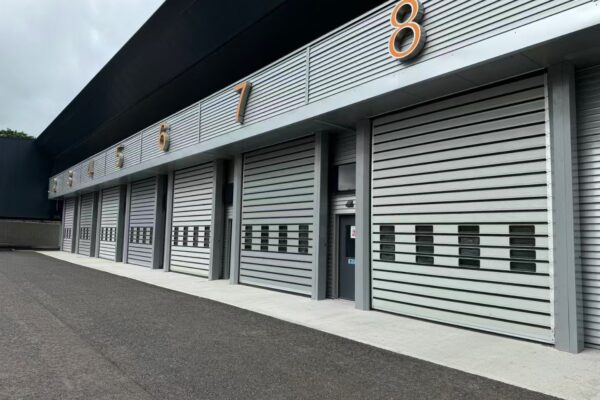When it comes to storage facilities, the doors are much more than just entry points; they are the foundation of security, longevity, and user satisfaction. A high-quality storage facility door ensures that belongings remain safe, withstands the test of time under various conditions, and provides ease of use for customers. This blog post dives into the essential factors that make storage facility doors a critical component—exploring how to balance robust security measures, enhance durability, and create an effortless user experience. Whether you’re managing a facility or designing one, understanding the value of well-crafted doors is the first step toward ensuring long-term success.
What Are Storage Facility Doors?
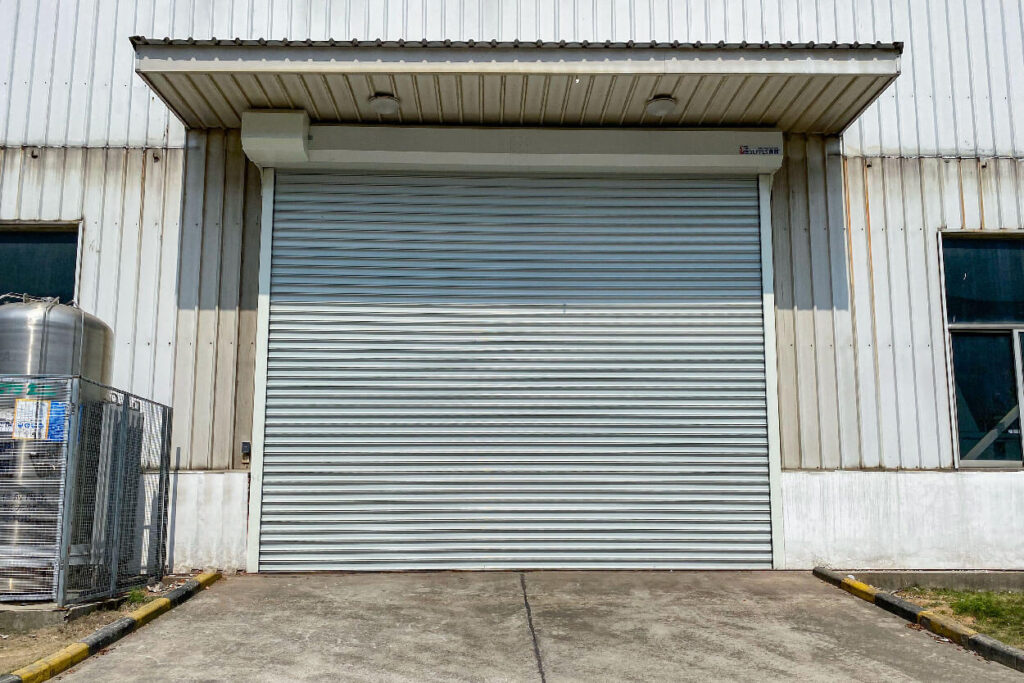
Storage facility doors are crafted to guard each individual unit within the facility, keeping stored belongings safe from theft, prying eyes, and the vagaries of the environment, such as humidity and dust. Usually constructed from steel or aluminum, these doors combine strength with rust-resistant coatings, to115924sweeten any potential wear from air or moisture. A seamlessly integrated lock—whether a simple keyed cylinder or a smart, keypad-secured hatch—enables users to seal their space with a single motion. User accessibility and confidence are at the heart of the design, making these doors a simple yet effective first line of defense for anyone renting a climate-controlled canvas of personal, household, or business items.
Storage Facility Doors Defined and Their Role in Modern Storage Solutions
Storage facility doors are no longer simply gates—they’re engineered guardians that buttress both safety and operational effectiveness, especially in self storage environments. Cutting-edge doors now deliver fortified weather resistance, superior material longevity, and seamless tech integration. A striking example lies in smart locking, where users manage entry via mobile applications, merging everyday convenience and surveillance-driven security into a couple of fingertip taps. Within climate-controlled buildings, insulated panels are gaining ground; they keep delicate inventories steady, insulating against sweltering sun at noon and nighttime chills alike. Together, these advancements reflect a clear trajectory: doors are maturing alongside customer expectations, continually marrying dependable performance with the unspoken promise of calm possession.
Key Innovations in Storage Facility Door Designs and Technologies
Automated Access Control Systems
Many modern storage facilities now feature automated door systems integrated with mobile apps or keypads. This allows users to access their units securely and conveniently without the need for traditional locks or keys. These systems often include features like remote access and activity tracking for added peace of mind. According to a 2022 survey, over 60% of new storage facilities incorporate some form of automated access technology.
Insulated Doors for Climate-Controlled Units
With the increase in demand for climate-controlled storage, insulated doors have become essential. These doors are designed to preserve internal temperatures, protecting sensitive items such as electronics, artwork, or important documents from extreme weather. Facilities adopting insulated doors have reported a 30% improvement in energy efficiency.
Roll-Up Door Designs for Space Efficiency
Roll-up doors remain a staple in storage facilities due to their minimal space requirement and durability. Their compact design optimizes unit space and allows users to maximize storage capacity. Recent advancements in materials have also led to roll-up doors with enhanced rust resistance and longevity.
Biometric Access Systems
For enhanced security, some facilities have introduced biometric access systems, such as fingerprint or facial recognition technology. These innovations minimize unauthorized access and provide a tailored user experience. A 2023 industry report revealed a steady rise in facilities offering biometric security, with an estimated 20% adoption rate in high-end storage units.
Weather-Resistant Door Technologies
Storage door manufacturers have developed doors specifically engineered to withstand severe weather conditions, including heavy rain, strong winds, and high humidity. These weather-resistant designs are particularly valuable in regions prone to natural disasters, ensuring the protection of stored goods. Facilities investing in these doors have seen a significant reduction in weather-related damages.
These advancements highlight how the storage industry continues to incorporate technology and design innovation, ensuring improved user experiences and asset protection.
Key Features and Benefits of Storage Facility Doors
Security Mechanisms for Storage Facility Doors
Today’s storage facility doors come loaded with intelligent security features, crafted to guard assets and grant clients lasting confidence. Here’s a look at five standout systems regularly integrated into these doors.
Electronic Keypad Entry
The electronic keypad enforces a PIN for each opening. Facility staff can distribute distinct codes, check who enters and exits, and reset combinations on short notice, tightening security with minimal fuss.
Biometric Recognition
A rising favourite, biometric locks scan either fingerprints or faces to validate identity. The hardware guarantees access only to registered users, delivering premium protection rooted in cutting-edge technology.
Reinforced Steel
Countless doors sport welded steel frames engineered to shrug off a sustained kick or pry. The unyielding material boosts lifespan and creates a critical, no-frills barrier against would-be intruders.
Access Management Hub
High-end doors mesh neatly with access panels, allowing teams to oversee locks, unlock remotely, and respond to anomalies in real time. Notifications of suspicious usage—such as a door being forced—are then relayed instantly for prompt action.
Integrated Alarms
Fitted with motion and shock detectors, these doors blare alerts when tampering or uncharacteristic motion occurs. Connectivity means action, sirens and notifications trigger in the blink of an eye, alerting staff to dangers before serious harm is done.
By functioning together, these systems deliver a solid defense for storage sites, effectively safeguarding assets and reducing exposure to potential threats.
Durability and Resistance to Environmental Factors
Storage facility security doors are engineered to perform reliably day after day, month after month, no matter what the weather dishes out. Consider these five features that lock in their staying power:
Corrosion Resistance
The door skin, welded from hot-dip galvanized steel or powder-coated aluminum, laughs at rust. This chemistry soldiers on, even in perpetually salty, damp air, sealing out moisture that would otherwise be the start of deterioration.
Temperature Tolerance
From the frozen-dry cold of -40°F to the oven-like sunshine that can bathe surfaces at 160°F, the door’s virtual skin stretches, shrinks, and pops back without cracking. The polymer bands and win-dow strip adjust to thermal extremes without losing their hermetic seal.
Waterproof Sealing
The perimeter sealing ribs, undercut and cross-lapped, converge at wet spots in storage roll up doors. This design channels every droplet to the puddle tray and out the drama-free downspouts, so indoor assets never become unplanned pools of merchandise.
Wind Resistance
After passing the fan-wall army that howls up to 150 mph, these behemoths float dank wind and screen shards that would freak out lesser doors. Their continuous hinge kinetics keep ginormous panels from flexing the wrong way and ripping the struts apart.
Abrasion and Impact Resistance
Each door flaunts a thermal-bridged polyurethane core. Blast-scan one and the tensile imprints vanish. The finish recoils from fork-lift beeps, aggregate lashes, and adverse weather, saving what the spotlight sees and what the alarm embeds in binary.
Together these features forge weather four-floor concrete and torch-prints wrong at a sweet, sweet sci-fi level of tolerance. Their weathers withstand what century after five, century sixty. While the assets inside thrive in confident obscurity.
Ease of Use and Accessibility
Storage facility doors are engineered with the goal of making entry as easy as possible for every visitor. The most important features include:
Ergonomically Designed Handles and Locks
Every handle and lock is crafted for comfort, so users with limited dexterity can grip, turn, or push the mechanism with minimal effort yet still achieve a reliable close.
Lightweight but Strong Materials
While the doors are built for long-term strength, their advanced aluminum and composites keep heft low, meaning anyone—young, elderly, or transporting gear—can swing the panel with a gentle pull.
Precision Rolling Systems
Industrial-grade rollers glide along precision tracks, creating gentle motion that virtually cancels out friction. The door opens or closes with a barely audible breathe, so even early-morning access causes no disturbance to fellow renters.
ADA Compliance as a Standard, Not an Extra
From the initial concepts, the door’s design team works to exceed the ADA guidelines, ensuring that a pattern of clearances, latch heights, and operating forces welcomes users with walkers, canes, or manual chairs.
Smart and Self-Operated Access
A fitted option for keypad or low-energy Bluetooth entry means renters can leave their hands free—ideal for those moving boxes or balancing a bag of groceries. Whether through a smartphone or a discreet tap of a code, the door responds before the perfect moment to lift.
Types of Storage Facility Doors
Roll-Up Storage Facility Doors
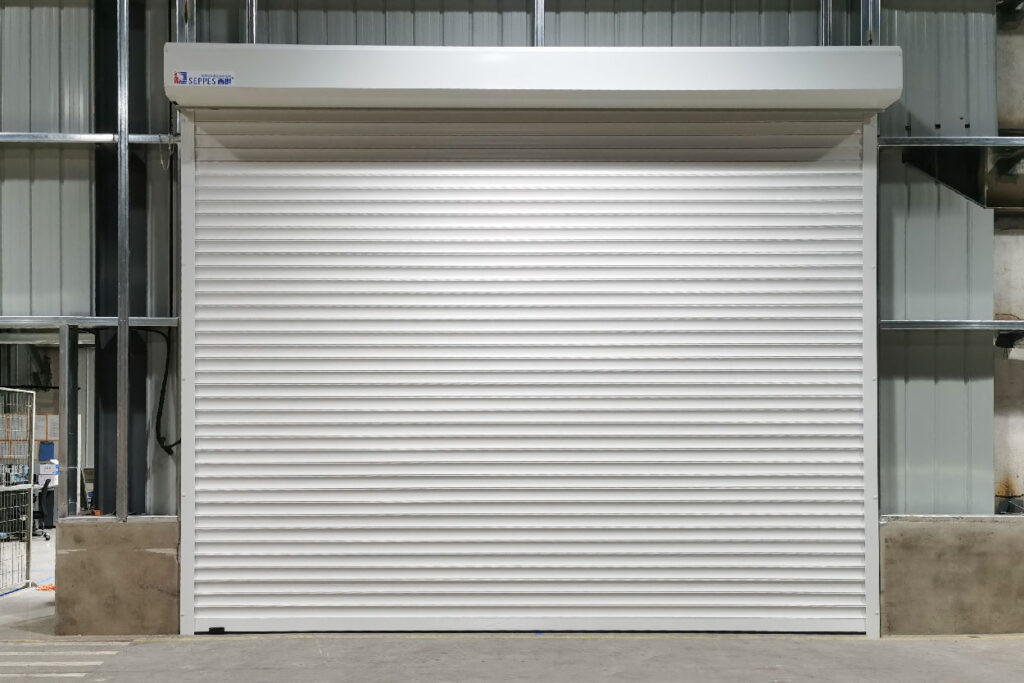
Roll-up storage facility doors have become increasingly favored in warehouses and distribution centers because of their combination of rugged performance and clever space efficiency. Rather than swing inward, these doors coil quietly and neatly above the opening, maximizing vertical and horizontal clearance. Here are the standout benefits for anyone considering a new installation or replacement of door systems:
Heavy-Duty Weather Shielding
Constructed from either galvanized steel or pre-painted aluminum, the slats resist rust, impact, and UV fading. This high gauge material stands up to driving rain, snow, and industrial fumes without compromising insulation or appearance.
Straightforward Service Needs
Roll-up doors have fewer moving parts than sectional or bi-fold systems, translating to infrequent hinge lubrication and a longer service interval for electro-mechanical components. Most owners find that annual inspections are enough to keep doors in peak condition.
Built-In Anti-Intrusion Features
Heavy rods engage when the door is closed, and optional electric locks can interface with alarm systems. This layered defense detours casual thieves, and reinforced guides absorb forced entry attempts.
Vertical Space Utilization
Because the door curls above the track, personnel and equipment can operate to the opening brink without the overhead conflicts common to swing or slide installations. This is especially advantageous in high-rack or tight-aisle settings.
Tailored Dimensions and Aesthetics
Every door can be manufactured to match an exact opening dimension and is offered in a palette of factory-applied colors. This customization preserves the visual harmony of the structure and optimizes the tightest architectural tolerances.
Swing Doors and Sliding Storage Facility Doors
Swing and sliding doors suit today’s storage environments by balancing practicality and performance. Their characteristics deliver immediate advantages for facilities of every size.
Ease of Access
Both door types glide or swing open with little physical effort, allowing employees to move in and out with equipment quickly and without downtime. By drawing parallel to the wall, sliding models especially excel in cramped loading docks or aisles, releasing valuable clearance.
Durability
Engineered for commercial use, these doors are built from heavy-gauge steel or reinforced aluminum, assuring years of reliable operation in warehouses subjected to daily impacts and mechanical wear. This tough yet lightweight construction keeps maintenance costs low.
Enhanced Security
High-grade locking options are standard on both formats, enabling the simple integration of electronic keypads, biometric readers, and drop-bolt systems. When combined, these measures thwart unauthorized entry, extending asset security beyond perimeter fencing.
Weather Resistance
Proper sealing around the perimeter of swing and sliding loops keeps exterior elements at bay, covering against freezing rain, sand, and wind. Operators can confidently store sensitive goods without moisture or temperature fluctuations.
Aesthetic Flexibility
Customers in any market segment can select finishes, colors, and surface treatments that reflect brand identity. Custom plate patterns or tempered glass inlays present the facility as modern and professional while delivering clear functional advantages.
Sectional Storage Facility Doors (Climate-Controlled)
Climate-controlled sectional doors are engineered to preserve a stable indoor microclimate by acting as a formidable barrier against extreme heat, cold, or humidity. These doors are tailored for environments storing items such as precision electronics, packaged drugs, valuable artworks, or rare archives, where even tiny temperature swings can cause irreversible harm. Here’s a quick snapshot of their leading attributes:
Superior Thermal Insulation
Crafted with multilayer, low-conductivity cores, these doors significantly curtail both conductive and radiative heat movement. The result: indoor climates stay consistent throughout the day or the century, and power consumption declines sharply, lowering utility costs year after year.
Positive Thermal Sealing
Every panel edge is equipped with microfoam and brush seals, generating a double dam against drafts, moisture, and thermal leaks in self storage door systems. These continuous seals safeguard temperature-sensitive collections by rejecting sudden swings caused by outdoor weather or quick-opening procedures.
Heavy-duty Construction
Galvanized steel with moisture barrier coatings or lightweight, structural aluminum provide the muscles these portals need. Withstanding years of forklift traffic, saline coastal breezes, or intense UV, their strength offers facility managers long-term return on investment without the need for annual replacements.
High-efficiency Automation
Integrated sensors and motors offer the advantage of soft-start, soft-stop operation, reducing shock loads and noise. Smart controls can synchronize door cycles with HVAC systems, minimizing compressor or heater loading and using the facility’s air cost-efficiently.
Tailored Solutions
Whether the design demands oversized bay entrances, color-matched museum aesthetics, or integrated vision panels for quick inventory checks, these doors are engineered to fit seamlessly. Custom dimensions and surface coatings enable alignment with corporate branding without compromising thermal integrity.
Materials and Construction of Storage Facility Doors
Steel, Aluminum, and Composite Storage Facility Doors – Detailed Overview
When considering doors for storage facilities, steel, aluminum, and composite materials present distinct advantages matched to different operational contexts. The following profiles summarize core characteristics and technical specifics for each choice.
Steel Doors
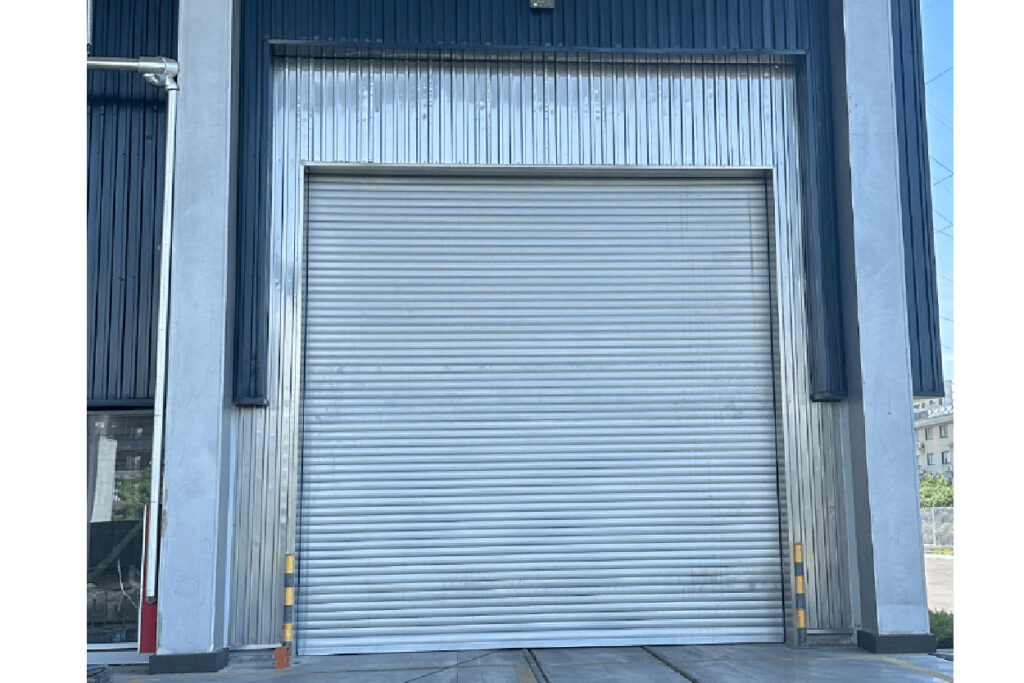
Strength: Renowned for outstanding tensile and impact resistance, steel doors withstand daily abrasion without compromise. Applications: Commonly installed in cold-storage, freight, and high-security operations. Advantages: Naturally fire-rated, extraordinarily durable, and demands minimal upkeep. Limitations: Substantial weight necessitates frame enhancements during fitting.
Aluminum Doors
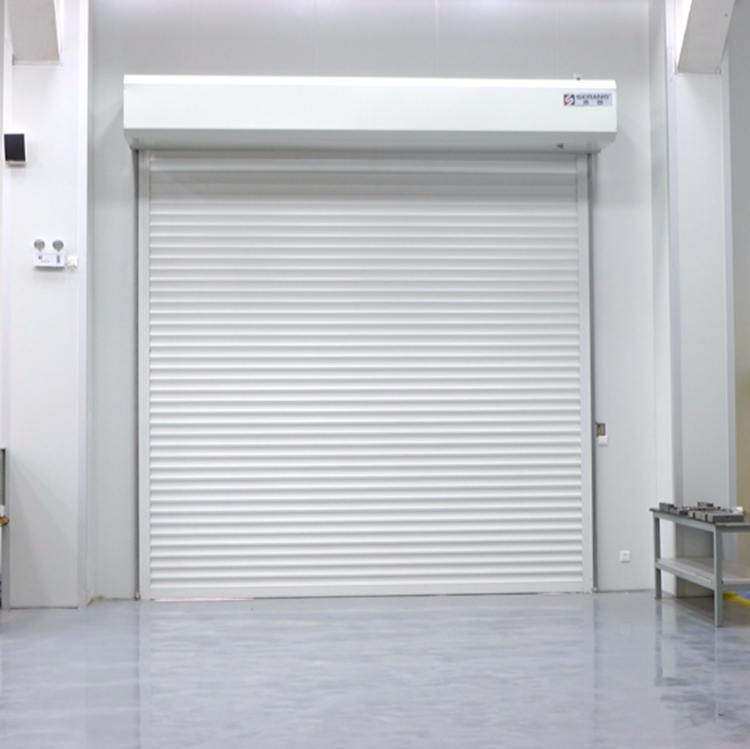
Weight: Reduced mass expedites manual and automated cycling, lowering actuator strain. Corrosion resistance: Oxidized or painted finishes excel in indoor salt-drenched, freezer, and humid conditions. Acclimation: Suitable for air, road, and ocean-hub facilities. ENERGY EFFECTIVENESS: Thermal breaks and core insulation deliver impressive U-values.
Composite Doors
Hybrid Construction: A laminate of fiberglass, polymer, and reinforced-carrier materials melds strength and thermal performance. Insulation: Phenol or polyurethane cores yield high R-values. Reliability: Expanded polymer maintains geometrics in corrosive, wet, and ice-stack environments. Configurability: Matching loading-dock colors, shops, and branding.
Insulated Steel Doors
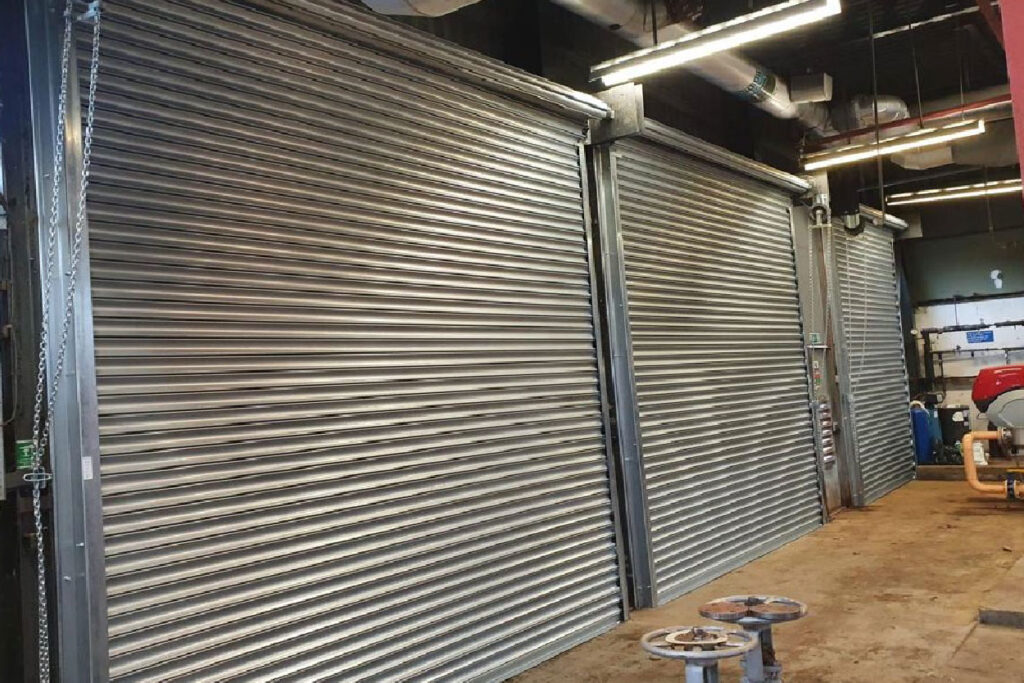
Insulated steel door Source from: SEPPES
Function: Lock, dock, and freezer facilities employing negative or positive thermal control. Thermal profile: Full-height insulated grid minimizes center-to-edge convection and conduction. Strength: Configured as SK, CF or FM standard-rated profiles retain monument strength verses standard k-sty.
Lower Utility Bills: When thermal performance is boosted, your overall energy consumption shrinks, so monthly energy statements look friendlier.
Powder-Coated Aluminum Doors
Long-Lasting Shield: The powder-coating action fuses a tough guard against scratches, rust, and harmful UV, lengthening usable life.
Visual Cohesion: Choose any color needed to reinforce company branding or harmonize with the building.
Less Scrubbing: A smooth surface repels grime, so wiping down is usually all that’s needed.
Light Yet Tough: Aluminum stays thin and easy to slide, giving the classic lightweight feel everyone expects.
Every door option presents distinct pluses, so you can design storage or workflow settings that really fit. Whether your priorities are theft repellence, keeping cool air locked in, or withstanding daily knocks, the best choice is the one that scores highest on your own list of goals.
Insulation and Weatherproofing Features
To secure peak efficiency and lasting durability, selecting doors outfitted with state-of-the-art insulation and weatherproofing is non-negotiable. These five standout innovations are engineered to refine energy use and defend against outdoor elements:
Insulated Thermal Panels: Constructed to restrict heat transfer, these panels keep rooms at a steady temperature and can cut energy bills by as much as 30% over the year.
Precision Weather Seals: Super-tough seals fitted along the full perimeter block cold drafts, rain, and particulate intrusions, letting conditioned air stay where it belongs.
UV-Block Surface Coatings: Specialized coatings absorb and deflect solar radiation, stopping discoloration, brittle spots, and structural sag from steady ultraviolet attack.
Corrosion-Resistant Alloys: Special fittings of metals like stainless and polymer blends resists the relentless damage wrought by air droplets in humid or salt-laden zones, protecting the core frame.
Moisture-Achored Ventilation Paths: Smart architecture allows trapped vapour to escape, keeping the edges dry and stifling the formation of damaging mould spores.
When taken together, these marvels of design empower exterior doors to shrug off hostile climates, elevate energy savings, and guarantee round-the-clock dependability, particularly for self storage roll up doors.
Impact Resistance and Longevity
To build doors that perform under pressure and stand the test of time, the following design features are critical for absorbing shocks and resisting wear:
Steel-Reinforced and Composite Cores
A layer of solid steel or high-density engineered wood at the door’s centre counteracts force, absorbing blows before damage migrates to the surface.
Impact-Selective Good Neighbour Glazing
Opt for laminated or heat-strengthened glass settling within the frame, to provide long-range deflection and resist chip propagation while maintaining light and clear vision.
Nano-Ceramic Shield Systems
Deploy abrasion-fused clear films or glass-like sprays to ward off microscratching, chemical stain, and oxidation that deceitfully degrade a finish.
Multilaminate Hybrid Assemblies
Fused layers of dent-grade steel, renewable infill, and resilient overlays yield a composite that synchronously bends, deflects, and dampens shock energy.
Premium Thermopeability Weather Kits
Continuous, compression-fit seals and silicone gaskets bake or cool into snug contours, blocking driven rain and hot-cold cycling that expand, contract, and copper-melt old cores.
Each of these engineered steps consolidates the door’s capacity to blunt impact while deferring failure and lifting visual promise—even under relentless exposure to wear, sun, or blunt accident.
Applications of Storage Facility Doors
Self-Storage Facilities
The entrances to self-storage facilities are engineered to deliver top-notch functionality, rugged durability, and fortified security day in and day out. They utilize premium-grade steel or aluminum to resist everyday impacts and keep performing reliably over the long haul. Roll-up doors especially stand out in this sector, shrinking the footprint needed for doors while allowing vast aisles of internal space; customers appreciate being able to drive up, park, and unload without worrying about swinging panels. The rollers tuck neatly overhead, providing maximum headroom and no floor tracks to trip over.
A heavy-duty locking mechanism sets the bar for protection; customers arrive knowing their items are secured by steel, not by plastic, and wanting assured silence from alarm panels, their request answered by vault-grade closures. Outdoor versions layer on protective finishes, deflecting ultraviolet radiation that would fade paint and, inside, laminates guard against unwelcomed thermal perturbations, guard against blistering free-range heat and frigid drafts. Extended from that, smart platforms are making inroads; doors unsealing by smartphone while pushed-no-response nosy neighbors instantly trilled via discord channels within the security app. Combine the materials performing under wind storms and the digital perform under wireless storms and you get performance that keeps on performing, especially in self storage roll up doors, and clients kept on smiling.
Commercial and Industrial Warehouses
Heavy duty storage doors are a key infrastructure element in commercial and industrial distribution centers. Built tough, they withstand constant exposes to traffic, temperature variations, and security demands while maintaining accessible yet secure entry points. Sectional, rolling steel, and high-speed fabric doors are the industry staples, each engineered for a precise operational profile. High-speed fabric variants, in particular, excel in rapid open-close cycles, shrinking dwell times and smoothing the flow of shipments. Most models also pair well with energy-saving design elements—tight sealing, thermal cores, and insulated wear skins—that maintain interior climate, trim utility bills, and safeguard temperature-sensitive cargo. Integration with sensors, gate controls, and interlocking safety light curtains heightens security and lowers accident rates, making automated operation a standard choice in high-volume circumstances.
Specialty Storage (Wine, Records, Art, Pharmaceuticals)
Specialized storage areas call for doors that deliver unmatched control over their environment, tightly regulated security, and enduring strength to shield irreplaceable and valuable contents. In the case of wine, insulated doors equipped with active temperature and humidity regulation keep the cellar target within the narrow bands required for gradual, faultless aging. Archives and art repositories favor airtight, conditioned doors that nullify temperature spikes, while their integrated seals keep dust, ozone, and other airborne threats outside the safe zone. The pharmaceutical industry insists on barriers that align with rigorous compliance mandates, offering proven contamination defense and creating a microclimate as stable as the manufacturing lab floor. Meeting these stringent mandates, the doors meld cutting-edge composites, smart control technologies, and superior engineering craftsmanship, wrapping every protected asset—be it Bacchus’s best, masterpieces in oils, or life-saving biotherapeutics— in relentless vigilance.
Security and Safety of Storage Facility Doors
Locking Systems and Tamper Resistance
To ensure the utmost security and integrity of storage facilities, advanced locking systems and tamper-resistant designs are essential. These mechanisms protect against unauthorized access, deter tampering, and maintain the conditions required for sensitive contents. Below are five key security features commonly employed:
Electronic Keypad Locks
Allow users to set custom PIN codes for access.
Integrated with audit trails to log entry times and individuals.
Biometric Access Systems
Use fingerprints, retina scans, or facial recognition for access.
Eliminate the risk of stolen keys or forgotten passcodes.
RFID-Enabled Locks
Employ radio-frequency identification for secure and touchless access.
Precision tracking enhances security for high-value or regulated goods.
Mechanical Deadbolt Locks
Provide robust physical resistance to forced entry.
Suitable for low-tech environments where power outages may occur.
Tamper Detection Sensors
Alert owners or security personnel to unauthorized attempts.
Capable of sending real-time notifications to connected devices.
These systems enhance the overall security and efficiency of storage facilities, tailoring solutions to diverse operational and environmental demands.
Fire Safety and Emergency Access
Smoke Detection Systems
Detects early signs of fire through the presence of smoke particles.
Modern systems offer high sensitivity and reduced false alarms.
Automatic Sprinkler Systems
Activates automatically when fire or high temperatures are detected.
Reduces fire spread and minimizes property damage effectively.
Fire Extinguishers
Strategically placed for manual fire suppression.
Includes CO2, foam, and dry chemical types for different fire classes, ensuring safety in storage roll up doors.
Emergency Exit Lighting
Illuminates exit paths during power outages or low visibility.
Ensures safe and efficient evacuation during emergencies.
Emergency Access Control Overrides
Allows designated personnel or responders to bypass security systems.
Ensures quick access to secure areas during life-threatening situations.
Compliance with Local Regulations
Compliance with local regulations is critical in ensuring safety and legal adherence in emergency preparedness. Below are five key local regulatory requirements commonly followed:
Fire Code Adherence in self storage facilities
Ensure all fire protection systems and equipment meet local fire codes.
Regular inspections and maintenance are required to stay compliant.
Building Evacuation Standards
Designate clear and accessible evacuation routes.
Install signage and emergency lighting per regulatory standards.
Occupational Safety Standards
Provide safety training for employees on emergency protocols.
Maintain records of compliance with workplace safety laws.
Accessibility Compliance
Adhere to regulations ensuring emergency exits and procedures accommodate individuals with disabilities.
Install visual and auditory alarm systems for inclusive safety measures.
Hazardous Materials Regulation
Properly label, store, and handle hazardous substances in accordance with local requirements.
Train personnel to respond to hazardous material-related emergencies effectively.
Installation and Maintenance of Storage Facility Doors
Professional Installation Practices
To keep storage facility doors operating correctly, safe, and durable, skilled installation is essential. Follow these five essential practices:
Accurate Measurements and Site Preparation
Measure frame openings and facility dimensions with precision so the door fits flawlessly. Remove all debris, daft, and prepare the substrate to the specifications dictated by the door data sheets.
Compliance with Building Codes
Install in strict accordance with prevailing local and federal building codes and the facility regulatory framework. Confirm the finished condition satisfies fire egress, illumination, and access guidelines.
Use of High-Quality Materials
Select components from reputable manufacturers, focused on performance under continuous use and prolonged environmental stress. Peg distant regions with galvanically compatible materials full of protection.
Alignment and Balancing
Install brackets, tracks, rollers, and all moving gear ensuring the centreline of the door plane. Run through balance, dynamics, and idle resistance checks at measured torque angles.
Professional Inspection and Testing
Finalize with an exhaustive handbook-driven inspection of critical interfaces. Operate controls, sensors, and locking provisions exercising their full operational range and confirming performance characteristics listed within the software documentation.
Routine Maintenance and Troubleshooting
Monthly Maintenance
Dust off all door surfaces, wipe tracks, and clean seals to keep particles from scratching or jamming the door.
This simple task minimizes surface damage and guarantees the door glides free of grit.
Moving Mechanism Lubrication
Give hinges, rollers, and tracks one short spray of silicone lubricant.
A light coat cuts friction, averts rust, and promotes quieter, longer service.
Visual Panel and Track Examination
Look over panels and tracks. Spot dents, cracks, or bent grooves that could compromise alignment.
Finding small damage today avoids costly adjustments tomorrow.
Securening All Hardware
Run a screw or socket wrench over nuts, bolts, and brackets to confirm they are snug.
A quick check prevents rattling or the risk of the door coming free.
Testing Sensors and Emergency Stops
Walk the door through its full cycle while briefy blocking the photo-eye. Check the door reverses promptly.
Confirm that any off-the-shelf or custom emergency-stop switch pauses the motor.
Cost Analysis and Value Over Time
Upfront Acquisition Expenses
Envelope the total cost in the quotation you prepare for clients: door purchase, hardware purchase, and authorized installer fees. The bracket averages $1,500 to $5,000, swerving in either direction with the door’s dimensions, the selected substance, and the architectural rendering.
Recurring Upkeep Expenses
Every year, reserve $200 to $500 for routine probes, lubricant loops, and small repairs. Sustained attention stretches the working life and flattens that possibly jarring repair spike.
Utility Efficiency Returns
A door crafted for insulative performance retains managed interior temperatures, trimming electricity use by 10 to 20 percent monthly. Tight seals and layered thermal breaks aggregate those monthly savings and reward longer.
Restoration or Renewals Expenses
A glass- or swap-latch repair may register $100 to $300; entire motor or frame upgrades can venture beyond $1,000. Staying ahead with upkeep of self storage roll up doors keeps sizable bills at bay and postpones four-digit renewals.
Marketplace and Asset Uplift
Doors receiving attention—paint, seals, hardware—communicate that the site is invested. Such impressions stitch neatly into price canvases: a properly outfitted property can attract 5 to 10 percent more in appraised resale metrics within a busy movers’ arena.
Comparing Storage Facility Doors to Other Facility Door Types
Storage Facility Doors vs. Garage Doors
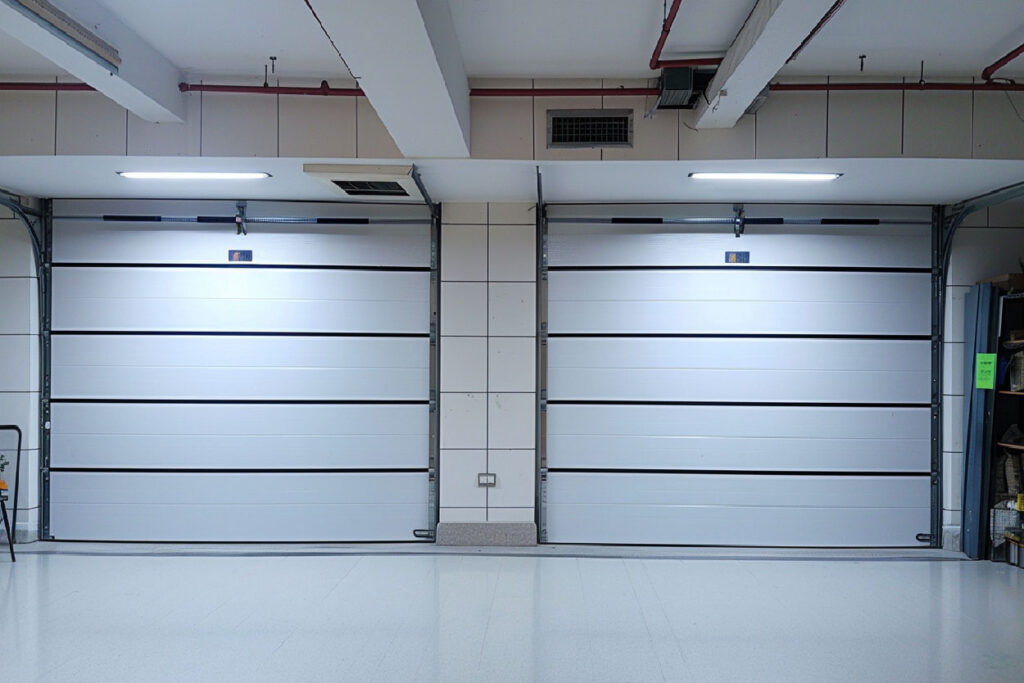
Storage facility doors excel in space efficiency, durability, and security, while garage doors offer broader accessibility, aesthetic options, and affordability, with each having unique pros and cons based on material, operation, and maintenance.
Tabular Summary:
| Parameter for self storage door selection | Storage Doors | Garage Doors |
| Space Use | Compact | Moderate |
| Durability | High | Moderate |
| Security | Strong | Varies |
| Aesthetics | Industrial | Customizable |
| Cost | Moderate | Affordable |
| Maintenance | Low | Moderate |
| Operation | Efficient | Versatile |
| Installation | Simple | Complex |
| Climate Fit | Excellent | Varies |
| Noise | Minimal self storage roll | Moderate |
Storage Facility Doors vs. Industrial Doors
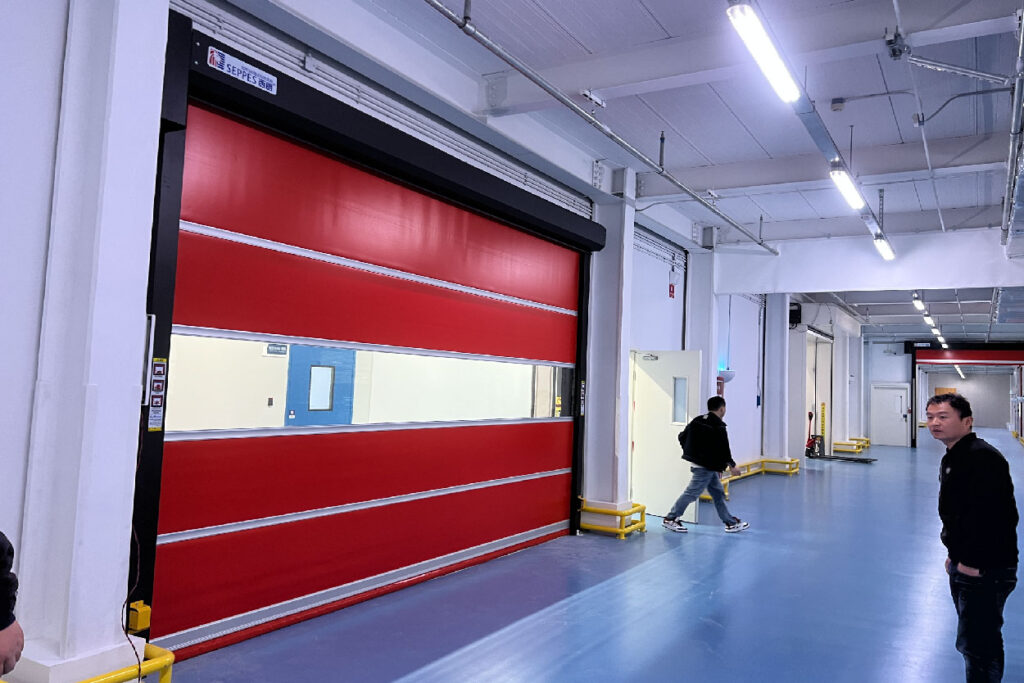
Storage facility doors prioritize space efficiency, durability, and cost-effectiveness, while industrial doors excel in speed, security, and energy efficiency, catering to high-traffic and specialized environments.
Tabular Summary:
| Parameter | Storage Doors | Industrial Doors |
| Space Use | Compact | Moderate |
| Durability | High | Very High |
| Security | Moderate | Advanced |
| Speed | Moderate | High |
| Energy Use | Moderate | Efficient |
| Cost | Affordable | Expensive |
| Maintenance | Low | Minimal |
| Operation | Manual/Basic self storage roll | Automated/Advanced |
| Noise | Minimal | Low |
| Special Use | General | Specialized |
Smart Technology and Innovations in Storage Facility Doors
Automated Operation and Remote Access
Automated operation paired with remote access has fundamentally transformed storage facility door management, delivering unmatched convenience and operational efficiency. Smart sensors, robust wireless links, and adaptive software coalesce, empowering users to operate and oversee self storage door functions from any location via their smartphones or tablets. This shift minimizes physical labor while simultaneously strengthening security; real-time access logs and immediate alerts for suspicious activities are standard features. Businesses report measurable productivity gains, attributed to the technology’s seamless alignment with established workflows and the elimination of manual-triggered delays. The progressive adoption of these capabilities underscores the wider industrial move toward integrated, intelligent systems capable of shared data, centralized control, and high resilience.
Integration with Security Systems and Facility Management Software
Linking security architectures with a full-featured facility management platform gives storage operators a toolkit that goes far beyond basic oversight. With a single pane of glass, managers can monitor every point of vulnerability—barriers, cameras, lighting, and temperature—ensuring that simultaneous threats don’t compromise simultaneous business needs. Quietly sophisticated layers, like biometric gates and machine-learning alerts that flag out-of-pattern behaviors, harmonize with ticketing and occupancy dashboards. Aggressive threats get countermeasures while insomnia-inducing controls notify only when stakes are high.
Operationally, management surfaces dovetail with unit inventory systems for self storage roll. Because scanners trigger entries to rack cameras only when cross-verifying fingers, pivots in carriage reduce lost-office-hours. Persistent asset logs merge at the dashboard with scheduled calibration logs, auto-triggering reports to leadership and fining periodic mistake repeated a relentless partial-open door. By routing tasks that once drained hours into a fluid processor handle, the newly hypnotic workflow gifts operators patient heads while clients, subscribing tenants, discover confident freedom of use.
Market Trends and Future Outlook for Storage Facility Doors
Growth of the Storage Industry and Door Demand
Rapid urban growth, compaction of residential spaces, and exponential e-commerce expansion continue to fuel storage market acceleration. In this evolving landscape, the need for advanced, resilient, and tamper-resistant access doors has become a core driver of facility profitability. Operators now view high-grade doors not merely as architectural features but as pivotal assets ensuring product integrity and patron confidence. Fulfilling the dual imperatives of seamless entry and robust defense, contemporary hardware blends precision engineering, smart connectivity, and user-friendly control interfaces. Observers anticipate operators will intensively upgrade existing stock and integrate next-generation entrances, solidifying security as an enduring competitive lever across the sector.
Leading Manufacturers and New Developments
JANUS International Group
JANUS International Group continues to lead the market in intelligent storage facility doors, offering rapid roll-up, capacious swing, and heavy-duty sheet variants. Praised for robustness and enhanced security, products now include automated operation and tamper-alert locking modules aligned with rising digital security norms for self storage roll up doors.
Dover Corporation
Dover Corporation markets a versatile lineup of storage doors centered on proven operation and reduced energy consumption. Its latest offering spotlights highly insulated roll doors coupled with an eco-conscious production pathway, appealing to industrial users and a widening residential client base.
Clopay Corporation
Clopay Corporation stands out for its diverse portfolio of commercial doors used extensively in storage environments. The newest models combine the company’s signature weather resilience with optional smartphone-accessed controls, delivering continuous performance and user-centric convenience.
The Cookson Company
The Cookson Company excels in bespoke rolling doors developed to satisfy precise client specifications. Innovations include fire-rated assemblies, doors certified to withstand hurricane force conditions, and automated drives permitting quiet, hands-free operation.
Raynor Garage Doors
Raynor Garage Doors provides heavy-duty roll-up and sectional door solutions for both storage and industrial applications. The latest range incorporates tamper-resistant locking hardware, integrated motion detectors, and alert systems, collectively maximizing security while maintaining dependable operation.
Storage facilities are consistently upgraded by manufacturers who place efficiency alongside rising demands for security, lasting performance, and convenient accessibility at the heart of their redesigns.
Headquartered in China, SEPPES has gained recognition for its robust industrial doors and storage systems. Their production strictly emphasizes energy efficiency, long service life, and bespoke design, serving an array of commercial and warehouse scenarios. By combining contemporary engineering— including quiet-operation mechanisms and superior thermal insulating layers— SEPPES has positioned its doors as both a cost-effective choice and a forward-thinking option for operators pursuing noteworthy value without sacrificing performance.
Conclusion: Choosing the Best Storage Facility Doors for Your Needs
Key Decision Factors for Facility Owners and Managers
Energy Efficiency
Pick doors that combine strong insulation with streamlined profiles to limit air leaks and keep heating and cooling systems from working overtime. Modern designs can help control temperature swings and, in tightly managed facilities, trim energy bills by up to 30% year-round.
Durability and Longevity
Select doors made from heavy-gauge galvanized steel or anodized aluminum to resist dents, corrosion, and fading. Such robust materials minimize the frequency of repairs and retrofits, delivering measurable returns in maintenance personnel hours and replacement budgets.
Safety and Security Features
Specify doors with multi-point locks, steel reinforcements, and programmable electronic or biometric access. Pair these with automatic latching systems and, where necessary, fire-rated cores to safeguard high-value inventory, sensitive areas, or buildings situated in elevated-threat zones.
Customization Options
Adjust door size, finish, or supplementary elements like acoustic inserts to suit operational workflows and aesthetic preferences. Tailoring doors not only reinforces branding and visual identity but also seamlessly integrates them within loading, storage, or production zones.
Ease of Maintenance
Seek doors that leverage self-lubricating bearings, weatherboarding that can be rinsed, and snap-in replacement panels. Such designs curtail scheduled downtime, lower maintenance staff visits, and ultimately extend the doors’ functional life without burdening the budget.
Final Recommendations for Secure and Efficient Storage Solutions
For sound and speedy storage solutions, it’s wise to choose tough, tailor-made doors that match your set goals. Look first at models with built-in strength and safe-lock options, and pick ones that need little upkeep; that keeps your storage running smoothly and cuts repair bills over time. Also, weigh the wider gains of high-grade materials and fresh upgrades—they boost everyday use and add an extra layer of protection.
Frequently Asked Questions (FAQs)
What are the benefits of using roll-up doors in self-storage facilities?
Roll‐up doors have become the go‐to option in self‐storage facilities, and it’s easy to see why. They slide neatly out of the way, save hallway inches, and let customers zip in and out, even when they’re hauling oversized boxes. Since the curtain rises straight up, no precious aisle space is lost, allowing hand trucks and pallets to move smoothly past and no merchandise to crush waiting behind the unit.
How do self-storage roll-up doors work?
When the door is lifted, interlocking slats spiraled together glide into a tight coil the size of a large pizza atop the opening. This means the unit can hug the wall and still let hammock crates slide in and out of the unit, even if the hallway has no additional clearance. High‐tensile steel, baked with anti‐scratch finishes upgrades the door’s resistance to because no one has the time nor money to service a door that gets rolled a dozen times a day.
What types of self-storage doors are available?
Among the engine‐room of self‐storage doors, the options extend a little farther. Swing‐out doors, with demand and lost knuckles, still head to dumpster‐fire status. Overhead designs have their niche window, but space can still lull both on The wall‐hunger and on the renter. Roll‐up and Janus doors then count the sales sales of the day. The Janus version, with printed levels and sporty, powder‐coated slats, lives for the optics, durability, and personalization as spirited as a cross‐band option.
How do I choose the right storage door for my facility?
When choosing a storage door for your facility, think about how often it will be used, how big the storage bays are, and how the door style fits within the overall look of the building. Look for doors that are simple to open and keep running, and that also safeguard the contents and keep out moisture. Talking to a specialist who focuses on self-storage design can steer you toward the right option for your operation.
What is the warranty on self-storage roll-up doors?
Most door makers will stand by their roll-up models with warranty coverage, though the terms depend on the design and materials you pick. Be sure to read the fine print before you buy; typically, the warranty will protect you against manufacturing flaws and performance lapses for a defined timeframe. For example, the coverage available with Janus doors is designed to confirm their durability over the years.
Are self-storage doors designed for specific wind loads?
Absolutely, a large number of self-storage door systems are engineered to meet commercial wind load standards. Doors rated for wind task the criteria undergo testing to make sure they hold up under strong gusts, hence giving you peace of mind based on location. Always confirm that the door load category aligns with the wind profile of your site to safeguard infrastructures and tenants.
What is the ease of installation for self-storage doors?
When installing self-storage doors, such as the model 650, the complexity can shift with the type chosen. For example, roll-up designs stand out for their straightforward assembly, especially when outfitted with solutions like the NS retrokit, which compresses the steps involved without sacrificing robustness. A correctly fitted door, regardless of design, is the first safeguard; alignments and tolerances that look minor can directly influence both daily performance and resistance against tampering.
What are hallway systems, and how do they relate to storage facilities?
Storage buildings typically rely on corridor grids, the arrays of aisles that funnel customers from the entrance to their rented units. Thoughtful hallway design eliminates choke points and undercuts unnecessary backtracking. The right width, turn radius, and unit orientation translate into predictable, stress-free foot and cart movement. A well-planned corridor layout automatically translates to the facility’s square footage, driving operational efficiency and customer satisfaction.
How do latch mechanisms work on self-storage doors?
Locks and release strips are the quiet champions of door security. Their primary job is to hold the door against the frame to leave no leverage point for unauthorized entry. Among the solutions are dead axle circuits, which engage with a simple rotational motion, and ratchet tensioners, which secure the door with adjustable, audible resistance. Both set ups maximize strength while minimizing effort; they are engineered to balance reassurance with the swift, single motion a legitimate occupant requires to gain access.
Reference Sources
Sectional Overhead Door Calculator
Author: M. Gestsson
Publication Year: 2016
Summary: This paper discusses a calculator designed for sectional overhead doors, which can be useful for understanding the design and specifications of industrial overhead sectional doors. It provides insights into the calculations necessary for proper installation and functionality.
Link: Sectional Overhead Door Calculator
Wind Resistance of External Overhead Roller and Sectional Doors
Publication Year: 2010
Summary: This bulletin discusses the wind resistance characteristics of external overhead roller and sectional doors, which is crucial for understanding their performance in industrial applications. It provides guidelines and testing results relevant to the design of industrial overhead sectional doors.
Link: Wind Resistance of External Overhead Roller and Sectional Doors
Cost Effective Automatic Garage Door Mechanism With Variable Speed
Authors: Y. Prajapati et al.
Publication Date: May 13, 2021
Summary: This paper discusses the design of an automatic garage door mechanism that can be applied to industrial overhead sectional doors. It emphasizes safety features and variable speed operation, which are important for modern industrial applications.
Link: Cost Effective Automatic Garage Door Mechanism With Variable Speed
Investigation of the Occupational Hygiene Errors in the Tasks of Overhead Crane Operator
Authors: R. Jafari Nodoushan et al.
Publication Date: November 1, 2021
Summary: This study investigates human error in tasks related to overhead cranes, which often interact with industrial overhead sectional doors. Understanding these interactions can provide insights into safety and operational efficiency in industrial settings.
Link: Investigation of the Occupational Hygiene Errors in the Tasks of Overhead Crane Operator
Analytical Investigation and Optimum Design of a Double Girder Overhead Crane
Authors: Y. Albar, Y. A. Onur
Publication Date: December 1, 2023
Summary: This paper discusses the design and optimization of overhead cranes, which are often used in conjunction with industrial overhead sectional doors. It provides insights into the engineering principles that can be applied to improve the functionality and safety of these systems.
Link: Analytical Investigation and Optimum Design of a Double Girder Overhead Crane
Conclusion
These sources should provide you with a solid foundation for verifying the information in your article regarding industrial overhead sectional doors and related technologies. Make sure to access the articles through your institution or library for full access. If you need further assistance or specific details from any of these papers, feel free to ask!

